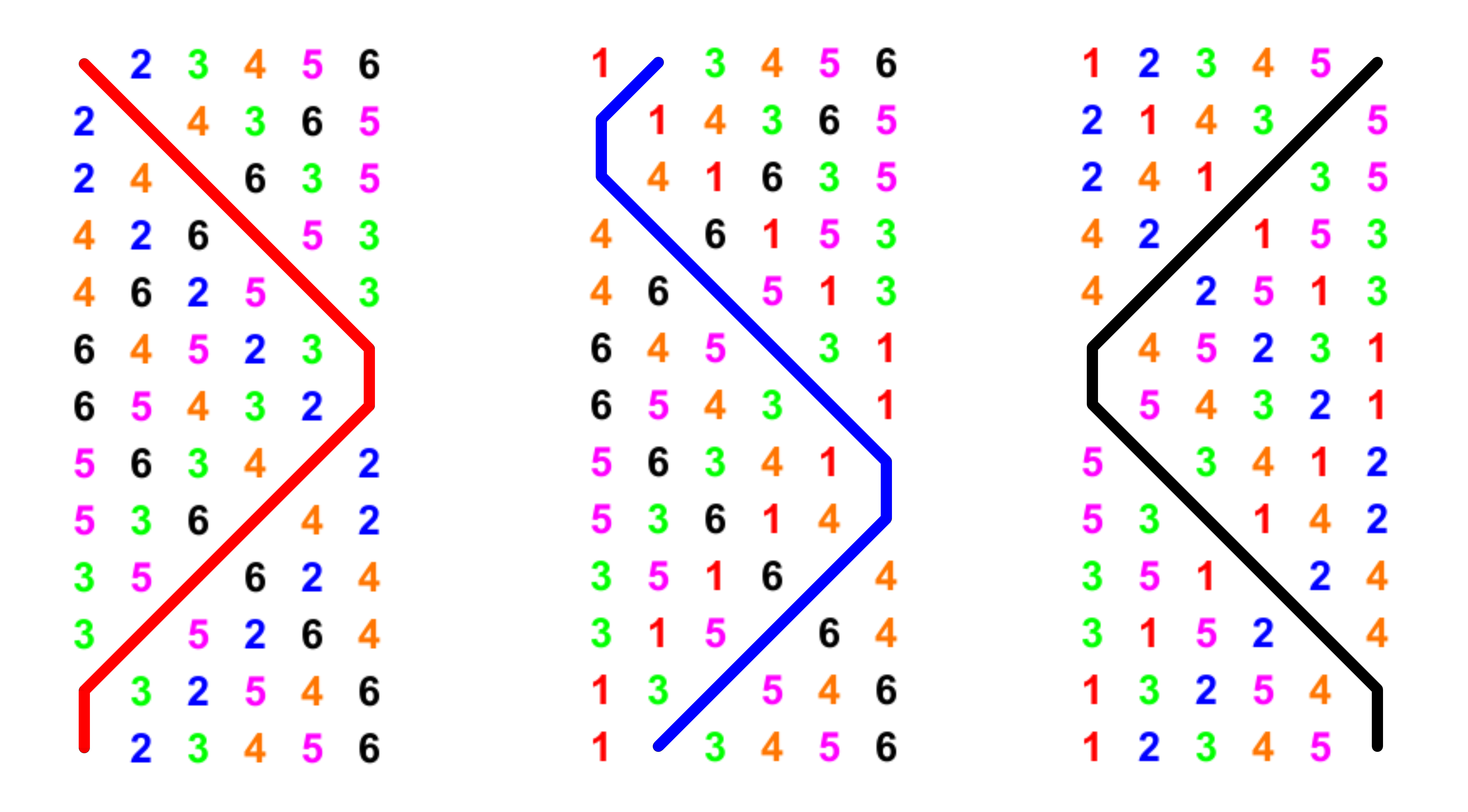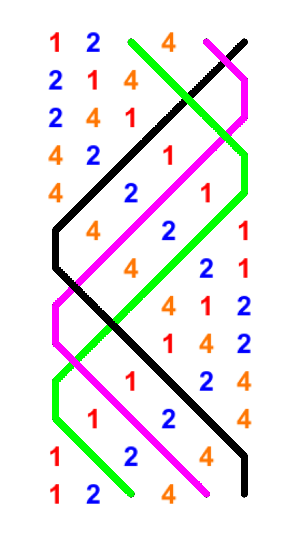Handbell Toolbox
7. Calling and conducting
7.7. Understanding coursing order
Coursing order
Have you heard the expression “follow your course bell” and not had a clue what this bit of bell ringing wisdom meant or what to do with it? Like a lot of things in ringing, the concept of coursing order is quite simple to understand but it is routinely very poorly explained, if it is explained at all.
In Plain Hunt and Plain Bob, the coursing order is the order in which you follow the bells, although it is in fact a much deeper property of the way methods are constructed, and so the concept of coursing order can be applied to other methods too.
The easiest way to see the coursing order is by looking at the order that specific bells (e.g. the treble, the 2nd and the 6th) pass the other bells in Plain Hunt. You will notice a circular pattern:
- The treble passes bells in the order – 2 4 6 5 3
- The second passes bells in the order – 1 4 6 5 3
- The sixth passes bells in the order – 5 3 1 2 4
The 5th always courses the 6th, the 3rd courses the 5th and the treble courses the 3rd etc. This is the coursing order and on six bells it is 5 3 1 2 4 6. Extending to higher numbers the coursing order is always the odd bells descending followed by the even bells ascending, so on ten bells the plain course coursing order is 9 7 5 3 1 2 4 6 8 0.

In Plain Hunt and Plain Bob, the coursing order is the order in which many things happen:
- You ring over the other bells in the coursing order.
- The bells come to the front in the coursing order.
- The bells go to the back in the coursing order.
Coursing order is a convenient way of describing how the bells follow each other around in a method, which remains constant between calls. It is easiest to see in plain hunt where it is the order in which the bells come to the front and to the back, (i.e. 531246 in Minor). The order is cyclic, so it repeats and could be written down starting at any point.
In a method the coursing order is defined with the treble omitted (so the above becomes 53246). In Plain Bob this order is constant through all leads of the plain course. Because the coursing order is cyclic – it is conventional to consider the tenor to be at the end (or beginning) and to omit it when written down (so 53246 is written 5324).
Exercises
Get out your coloured pens and paper and write out Plain Hunt on 12 or 20 bells and work out the coursing order. You should be able to see how the coursing order extends to all numbers of bells.
Course and after bells

Your course bell is the bell you follow down to the lead – so you might hear someone say “take your course bell off the lead.” Your after bell is the bell that follows you down to lead – hence the instruction “your after bell takes you off the back”.
The coursing order on 6 bells is 653124 i.e. the 5th courses the 6th, the 3rd courses the 5th and the treble courses the 3rd.
- If you're ringing the 5, your course bell is the 6 and your after bell is the 3.
- If you're ringing the 3, your course bell is the 5 and your after bell is the treble.